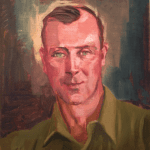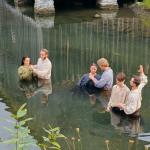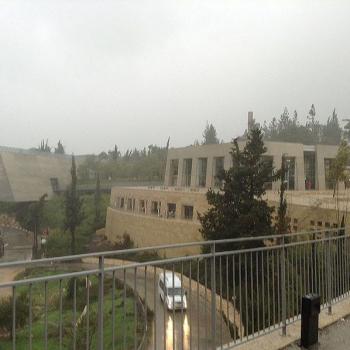
As I say, the game is afoot. Today marked the fourth day of filming for the Interpreter Foundation’s new movie project, Six Days in August. Our crew and our actors are hard at work, filling long days, in Upper Canada Village, which is located on the northern bank of the St. Lawrence River in the province of Ontario. Thanks to the kindness of our producer, Russell M. Richins, I’m very pleased to be able to share still photographs with you from the film sets.
I’ve begun. to hear good reports from Canada, that things are going well, that the performances are good. This is a relief. It allays worries.
When I was about to have my first look at the first complete rough cut of Witnesses — before the sound had been “sweetened” (as professionals in the industry term it) and before the colors had been evened out — I remember thinking, “But what if I don’t like it? What if I hate it? What if it’s terrible? What then?” I haven’t been an enthusiastic fan of some Latter-day Saint filmmaking, and I worried that this effort of ours might just be one more addition to list of mediocre, amateurish movies. I knew that our filmmakers were conscientious, meticulous professionals but, still, what if it simply fell flat?
My wife and I had been present on set for some of the filming. We had been over the script multiple times, suggesting alterations here and there, and reading subsequent revisions. We had been involved in several of the principal casting decisions. It was such a relief, when it concluded, to be able to say to myself “That was pretty darn good!”
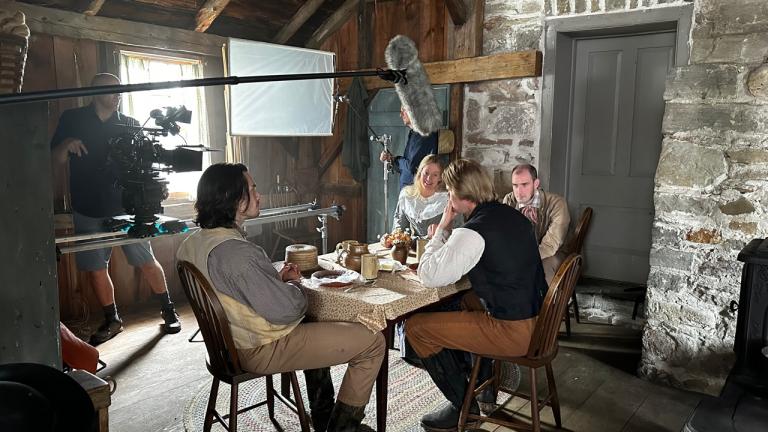
I’ve just been on the phone with Neal Rappleye, who, among other things, told me about the paper that he’s finishing up for presentation at the rapidly approaching FAIR “2023 Defending the Book of Mormon Conference.” I want to call that conference to your attention. I’m looking forward to hearing Neal’s paper, which promises to be quite exciting and important, and indeed to the entire conference. I hope that I can, that my schedule will permit it. The conference looks to be very, very good. What a line-up!
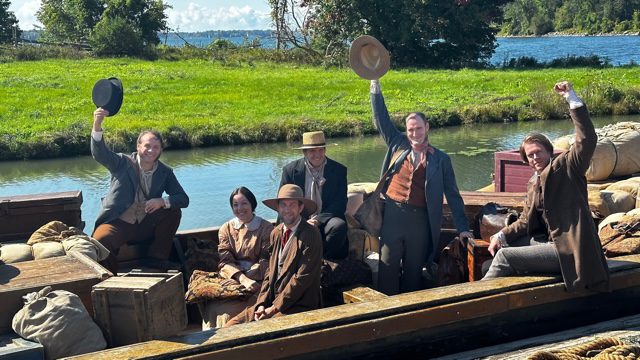
I’ve been gradually reading a new volume, edited by Shirley S Ricks, Stephen D. Ricks, and Louis C Midgley, entitled Steadfast in the Defense of Faith, and I want to report here on the first five essays in the book, all of which I commend to your attention.
- “The Covenant to Defend the Kingdom of God,” by John Gee — Dr. Gee argues that faithful Latter-day Saints and Latter-day Saint institutions have an explicit covenant obligation, where appropriate, to sustain and defend the claims of the Restoration and, accordingly, that failure to do so, where appropriate, constitutes a violation of that covenant. It’s a strong statement. But I cannot see a way for a committed Latter-day Saint to wriggle out of it.

- “Reflections on the Genesis and Evolution of the FARMS Review under the Editorship of Daniel C. Peterson (1989-2011),” by Shirley S. Ricks — Dr. Shirley Ricks was the production editor over most of the history of the FARMS Review, which means that she not only had a first-row seat for most of that time but was a central participant. She rendered signal service in that position. Without her, we would probably still be jabbering with one another and laughing and telling stories in one of our editorial meetings, no actual issue of the Review having ever been published. However, when she said “Gentlemen! We need to get to work!” we humbly obeyed. In a nod to Martin Heidegger and in view of her indisputable authority, we pronounced her “Being Itself.” And she has rendered signal service here, too, telling a story that others, much less sympathetic, have sought for years to tell themselves, but with wilder imaginations and much less information.
- “Proving That the Church is True,” by Steven T. Densley — Steve Densley is the extremely capable executive vice president of the Interpreter Foundation. More to the point, he is a practicing attorney and, in this article, he turns his well-trained and highly intelligent legal eye to the question of what constitutes “proof” and whether such proof is possible in the case of the claims of the Restored Gospel. We commonly say that it isn’t, but he offers a surprising response to the question that, in my judgment, is extraordinarily thought-provoking and that merits a close re-reading.
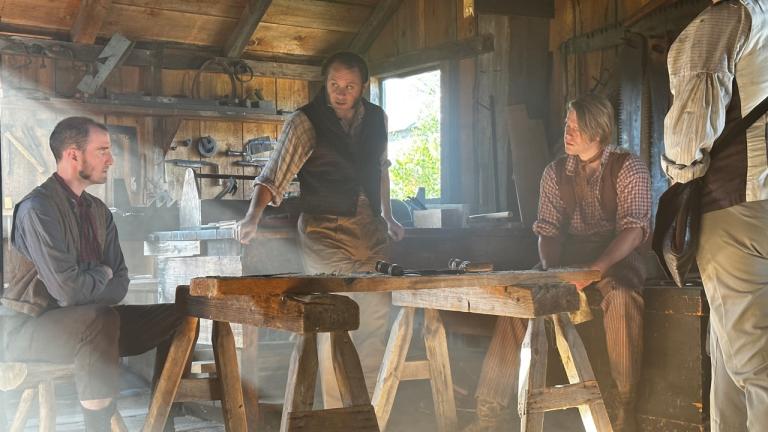
- “The Restored Gospel and the New Liberalism: The Inescapability of Political Apologetics,” by Ralph C. Hancock — Ralph Hancock is a political philosopher who, in my opinion, makes a very persuasive case that, even though the Church has maintained and should maintain neutrality with respect to partisan political issues, the Gospel (and, for that matter, its rivals) cannot be altogether separated from matters that have political implications. I wish that everybody who supports or rejects the Church’s stands on social issues (e.g., the currently hot issues regarding gender and sexuality) would read this essay slowly, carefully, and honestly.
- “David Hume: On Human and Divine Things,” by Louis Midgley — I knew that Professor Midgley, also a political philosopher, was working on an essay regarding the great David Hume’s views on religion. I just didn’t know where it was going go. I was hoping that it would come to the Interpreter journal. (It didn’t.). Hume is often regarded as a religious skeptic, and usually as a discreet atheist. Professor Midgley, however, contends that he was very possibly not an atheist — that he was a skeptic, yes, with regard to “natural theology” and reasoned arguments claiming to prove the existence of God, but that Hume’s skepticism points to the need for divine special revelation. And that Latter-day Saints should find his position quite congenial.
Posted from Moab, Utah


